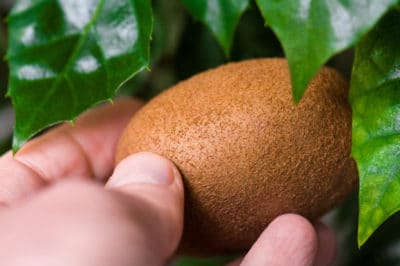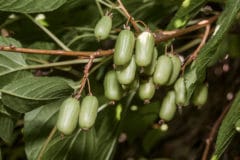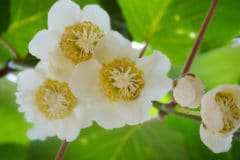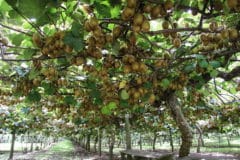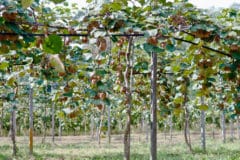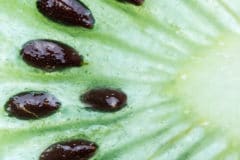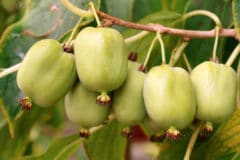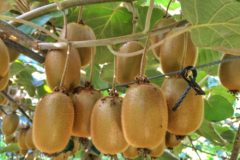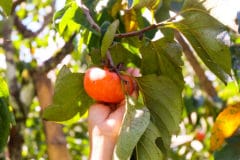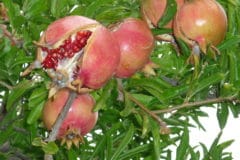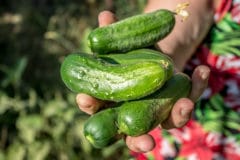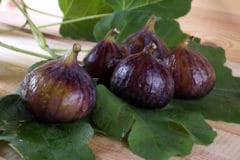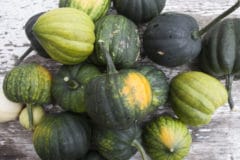Types of Kiwifruit
The fuzzy brown-skinned kiwifruit you see at the grocery is usually Actinidia deliciosa. Hardy kiwifruit are Actinidia kolomikta and Actinidia arguta. Fuzzy kiwifruit grows well in USDA Zones 7 to 9, but cannot tolerate cold temperatures for very long. Hardy kiwifruit are native to Russia and other cold areas. They can be grown into Zone 4 and even Zone 3 if properly sited and managed.
Kiwifruit Varieties
Your kiwifruit will grow and produce best if you choose the right cultivars for your zone. Actinidia deliciosa varieties do best in Zones 7 to 9. They include:
- Blake
- Hayward
- Saanichton
Varieties of Actinidia arguta will also grow in Zones 7 to 9, but are hardy to Zone 3. They include:
- Ananasnaja
- Ken’s Red
- Michigan State
- Natasha
- Tatyana.
Estimating Maturity
The projected maturity date and harvest period for a particular variety of kiwifruit is an estimate only. The fruits generally attain their full size by August but are not ready to eat as they are not sweet. The sugars gradually develop until the fruit is at maximum sweetness, even though the fruit remains the same size. Black seeds are an indication of ripeness.
The Harvest Period
Vine-ripened kiwis will have the best flavor. Begin tasting some fruit when you think they’re ready. They don’t store well, but they also ripen over a period of time rather than all at once. If you check your fruit every two or three days and pick only what seems ripe, you can have tasty fruit over a longer period. Once ripe, however, the fruit must be picked.
How to Harvest
Kiwifruit should always be handled with care. Once ripe they will bruise easily; if damaged, the storage life is even more limited. Kiwi will ripen off the vine, so if you get a few that aren’t quite ripe, just store at room temperature. Snap or cut the stem at the base of the fruit – the advantage of cutting is that you won’t tear the fragile skin.
Post-Harvest Storage
Kiwis can be stored for four to six months if kept around 32°F (0°C). Chill as quickly as possible after you pick it. Store in an area of high humidity. If your only option is a refrigerator, pick while still hard and store in the fridge in a vented plastic bag. Bring to room temperature and allow to ripen on the counter. Store in a bag with a banana to hasten ripening.
